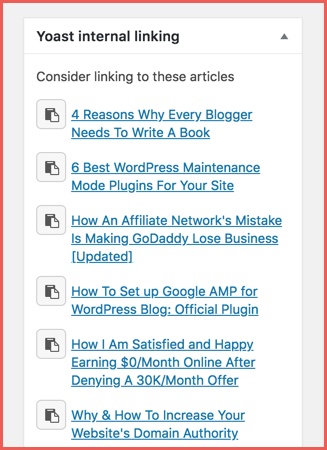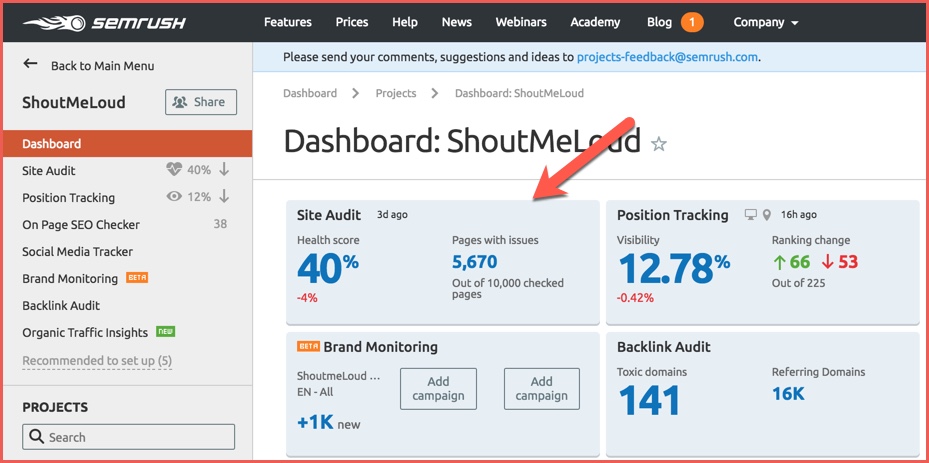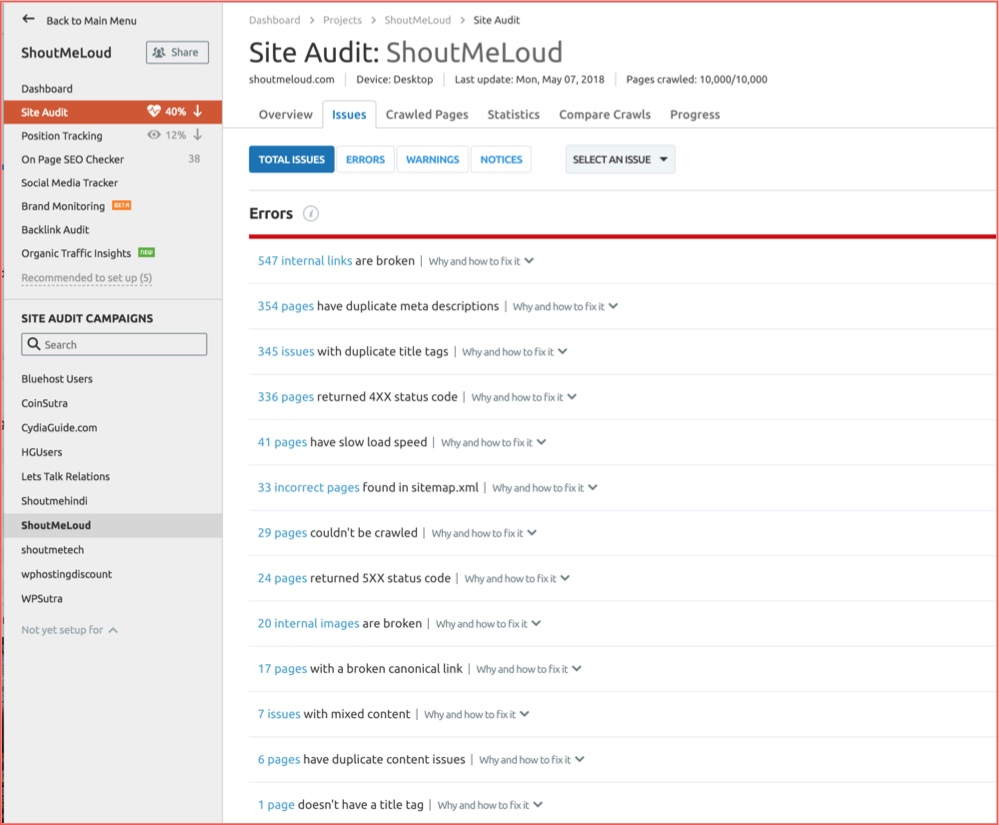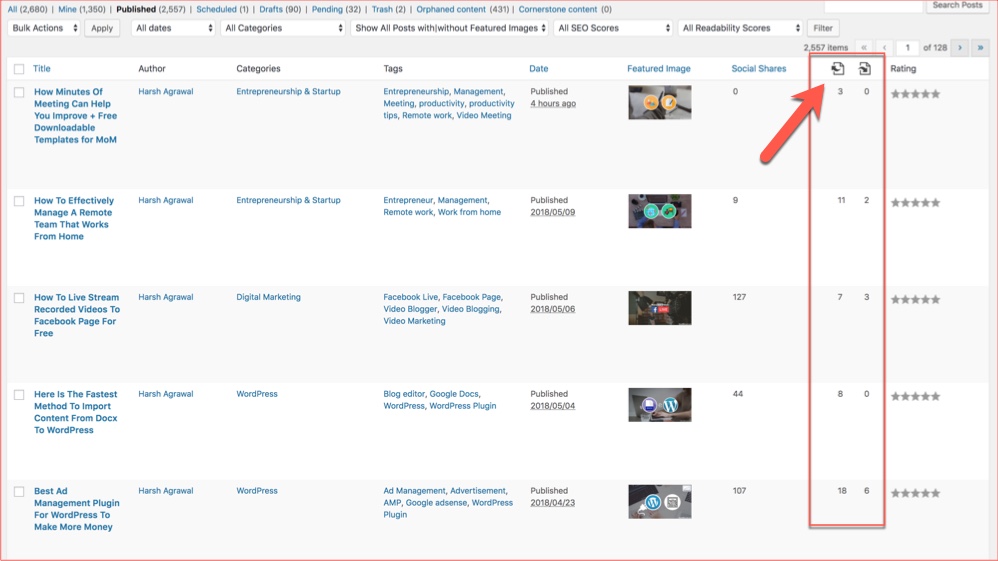Struggling with low traffic on your blog?
Well, the first thing you could do to improve your organic traffic is by working on your On-Page
SEO and On-site SEO.
ShoutMeLoud gets more than 1.5 million page views a month and 80% of our traffic is organic. It would not have been possible without high-quality
content and technically sound SEO. Today, you will learn about one important SEO factor that will help you improve your overall SEO score and thus organic ranking.
Internal linking is one of the most overlooked factors by webmasters and those who hire writers for the content.
PLEASE GUYS SHARE THIS POST
Check OUT For More Specially recomended for you
What is internal linking in SEO?
Links from one blog post or a page to another within the same domain are called internal links. Internal links help search engines crawl the pages effectively. More than that, it helps to pass the link juice from one page to another.
Lets understand with an example:
Let’s say you have a webpage which has received about 10 high-quality
backlinks from other domains. Now that page is already ranking higher in the SERP’s and what you can do here is you can link to other pages of your websites from that high ranking page and thus pass on the link juice to other pages which are not yet strong in terms of backlinks.
To build an authority website, you need to ensure all pages of your blogs are interlinked and this is where the internal linking technique comes into the picture.
A good example of the solid internal linking structure is Wikipedia and we all know how well Wikipedia ranks in search engine.
Now, since you have an understanding of what internal linking is, it’s time to learn some advanced tips and tricks of getting this technique right.
How to start internal linking
The thumb rule of internal linking is that pages should be contextually relevant. Whenever possible, take advantage of anchor text internal links.
- Related posts after posts, and
- Popular posts in the sidebar…
…are some of the easiest ways to add internal links to a webpage. In WordPress ecosystem, you can use WordPress plugins for quick internal linking. Here is a guide on the same which is a good starting point for you. You should look up to Wikipedia, and add 7-10 internal links in an article of 1200 words. There is no limit for internal links as long as they are contextually relevant and helpful for users.
I usually add internal links while writing a piece of content or when
proof-reading it. If you have an editor in your organization, you should train him for adding the internal links while editing content.
Recently, I switched from Yoast SEO free to the paid version and it has a really nice feature called “Yoast internal linking” which recommends the relevant article that one could use it to add within the article.
If you plan to add the internal links to a blog with over 200+ blog posts, this plugin will save a lot of time. I have talked about this feature in detail earlier,
But, how about old posts?
How do you find pages that have low incoming links or pages where you haven’t added enough internal links. In this next section, you will learn how to identify such pages. Once you do that, you can start editing them.
Finding pages with low incoming or outgoing internal links
Low incoming links
The best way to start improving your internal link is by identifying pages which have the least number of internal links. Every page should at least have 1-2 internal links (referenced from other pages). For this, we will be taking help of SEMRUSH tool site audit feature. I have talked about
SEMRUSH a couple of time in my earlier articles and this is the SEO suite I’m using from past coole of years. If you are using SEMRUSH, then use it’s feature to find pages with low incoming links or you can read the next section where I have shared how you can do the same using Yoast SEO WordPress plugin.
- Add your site in the site audit feature of SEMRUSH Dashboard
- Run a complete site audit (the trial version also lets you do that)
Click on issues, and under Notices you will see the option that says “X pages with only one or less incoming internal links”.
Once you click on it, you will find the list of pages that need your attention.
While you are using the issue feature of SEMRUSH, do try out few other things:
Alright, now let’s move to other parts of this puzzle and identify pages from where you can start giving more internal links.
How to identify pages with the low number of outgoing internal links
For this, we will be using
Yoast SEO pro version. Yoast SEO Pro can also let you identify pages with low incoming internal links as well (I discovered that while writing this section).
From the Yoast > Tools section, enable the text link counter feature and go to posts edit section inside the dashboard where all your blog posts are listed.
Here, you will see two new columns which show the number of outgoing internal links and number of incoming internal links to the post. (See below screenshot for better understanding)
Here, you can sort the columns based on ascending or descending order of the number of links. However, one feature that I miss seeing in the number of internal links is the ability to see the posts that are linked to that article. However, we can do that using another WordPress plugin called WP Link status. It has probably not been updated for long but it works.
For WordPress blogs, you can identify the issue quickly with Yoast SEO premium version. All other websites which are not built on WordPress or BlogSpot should use SEMRUSH to find such pages.
Once you have identified such posts which the low number of incoming internal links or outgoing internal links, half your job is done. From here on, you should start focusing on updating the posts to improve the overall link structure of your blog.
I hope you find this article useful and that it helps you sort your issues on the blog. Let us know…
- How do you identify pages with no incoming internal links or pages with low outgoing internal links?
- How do you improve your Website internal linking structure?
For now, here are a few hand-picked guides for you to read next (this is also a part of my internal linking technique):






